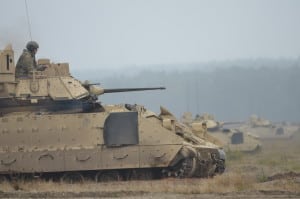
Testing of the anti-guided missile shield the Army has chosen for the Bradley Fighting Vehicle has been pushed into January because of difficulty marrying the Iron Fist active protection system to the platform.The Army’s ground combat systems program office (PEO GCS) has spent months installing the Iron Fist APS on a hybrid A3/4 version of the Bradley in anticipation of a six-month “characterization” campaign. During that time, the Army will assess whether Iron Fist can detect, track and destroy incoming…

 By
By 








